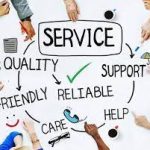
Loyalty, sales conversions, and business profitability depend on customer experience. It’s only going to be better for the customers and more businesses will act to deliver what they need and want.
If the company cannot deliver on these expectations it has big penalties like churn and revenue loss. Training, customer satisfaction monitoring, and proactively communicating are all customer service tips that companies can take to keep themselves from the most common customer service mistakes.
Dissatisfied Customers
Customers are often unhappy and the most damaging outcome of bad customer service. Even if they do not drop off right away, having negative experiences over and over will likely turn them off your business in the future.
The business costs from customer churn; the business should know what caused the first customer dissatisfaction and provide solutions to keep clients in business. To avoid churn, companies have to understand why individuals left, and then provide a path back in.
Unhappy customers leave reviews on other companies – and you never know when a bad review goes viral. Making sure that you have a robust feedback loop and act on it is the best way to help businesses steer clear of bad reviews.
Increased Customer Churn
Customers who’re uneasy about unanswered questions and lag time in the response are more likely to defect, which can cost SaaS providers with critical recurring revenue that runs their businesses a major piece of the pie.
Slack customer service usually brings about bad word of mouth, and that’s a huge problem for the high profile brands with large reputations and followings online. Even one bad review can hurt their reputation and make sales drop.
Customer who is not happy will lash out on Twitter or Facebook and ruin your business further. Training and tech systems that are out-dated could result in inconsistent customer service and poor performance; get this right and you’ll thrive.
Damage to Brand Reputation
Whatever the reason – long lines, customer service execs being mean or a case never closed – bad customer service can wreck your brand and damage key customer service measures like average handling time and first contact resolution rate.
Consumers don’t always forget bad experiences and they will likely pass them on to their friends and family. Your business could be wrecked in no time thanks to the power of word of mouth.
The reason you have a good brand name is that customers can reject the purchase of your products and services and you will lose sales and lower growth and profitability. A bad reputation also harms your connections with partners and suppliers, cutting you off from getting good deals.
Negative Reviews
You can lose customers if you do not have a good process for complaint resolution. In addition, unhappy customers share their complaints on social media and reviews; such bad word of mouth can harm brand reputation and attract new customers.
An one-time misstep is enough to spawn an online review tsunami that destroys your reputation and profits. Reviews are now read carefully by customers before they buy: negative reviews tell us we’re not always able to deliver excellent customer service.
Having the compassion to accept bad reviews can save relationships with customers and build goodwill for your brand. A response to a negative review also gives businesses an important means of seeing where there is a disconnect in operations or product features that don’t quite meet customer needs and find some place that will do so more.
Increased Employee Turnover
Customer Service helps create repeat customers, and bad service is an absolute disaster for businesses – it causes churn and hurts reputation, not to mention preventing referrals from happening.
Chronically bad customer experiences undercut customer trust in your brand and diminish consumer loyalty to it – which is particularly fatal for repeat and referral-based businesses.
People who work for a company with bad customer service become numb and angry which can result in employee burnout and a miserable working atmosphere which affects morale, performance and cost.












